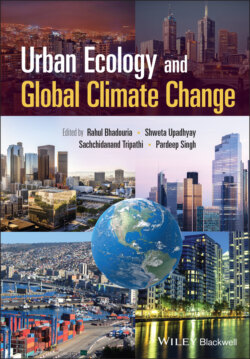Читать книгу Urban Ecology and Global Climate Change - Группа авторов - Страница 53
2.5.6 The Impact of Urbanisation on Epidemiology of Obesity and Overweight in Relation to Cardiometabolic Syndrome
ОглавлениеIt is reported that excessive weight gain or obesity is not the result of a single cause, such as genetic tendency or the socioeconomic level of living as they do not justify the rapid increases in obesity in the nineteenth century. A number of other research suggested that urbanisation is one of the most important factors of an obesogenic environment as it entails an environment that promotes gaining weight and contributes to obesity (Swinburn et al. 1999) (Figure 2.6). There are various factors in the model of urbanisation which has led to the increased prevalence of overweight and obesity in the world over the last 50 years (Pinchoff et al. 2020). Several other factors include residential environment, cultural structure, social relationships, and extent of surrounding areas that changed during the phase of urbanisation and industrialisation. These are considered as some of the most important environmental factors impacting nutrition intake and physical activity which is a major cause of obesity. Industrialisation, a product of urbanisation in the UK and the United States of America (USA) from the start of the nineteenth century though made life easier but lead to a directly associated increase in the frequency of obesity in society (Congdon 2019).
After the association of the increasing trend of urban population and obese people in the developed countries, obesity epidemic spread in low‐ and middle‐income economies were also linked to the lifestyle changes and a decrease in physical activity due to the sedentary nature of working, changing modes of transportation due to crunched time and ease of availability and few restrictions on access to or availability of junk food. Though urbanisation has led to supportive policies in almost every sector, such as health, agriculture, transport, urban planning, environment, food processing, distribution, and marketing; built environments lead to less physical activity, fewer open markets and farm stands and less outdoor recreational space. Also, technology advancements lead to lesser outdoor play, an increase in time spent watching television and playing computer games, more advertisements, and mass media marketing of junk food and carbonated beverages resulting in poorer diets and high‐calorie food intake (Bahadoran et al. 2016). Even the job sector has seen a surge in jobs of a more sedentary nature (such as manufacturing and desk jobs) and fewer active jobs (such as farming). The effects of this environment have majorly impacted the health of individuals, not only physical health but also intellect, mental development, as well as on physical and emotional structure which has increased the incidence of chronic comorbidities, and become the leading cause of deaths worldwide.
Another major issue regarding urbanisation is associated with climate change. Urbanisation leads to the migration of people from rural places to the cities, which forces rapid, inadequate, and poorly planned expansion of cities. According to World Economic Forum Reports 2015, developing countries account for around two‐thirds of annual greenhouse gas emissions, caused by their economic growth and rapid urbanisation, poor infrastructure, and activities of people (World Heart Federation 2015). These directly affect climate change and increase the potential of natural catastrophes to cause unprecedented damage. Climate change, increasing ambient temperature, carbon‐extensive construction and large generation of greenhouse gases decreases the quality of life in the cities, reduces the conducive environment for physical activity which lays a huge burden on weight management.
Obesity research has highlighted that physical activity levels are declining, and sedentary behaviours increasing, not only in developed countries, such as the United States, but also in low‐ and middle‐income countries, such as India, China, Bangladesh, and UAE (Radwan et al. 2018). The proportion of overweight individuals has seen a considerable spike between the years 1980 and 2020 from 40% to almost 75% in the United States, Canada, England, Spain, Austria, Italy, France, and Korea. According to the World Factbook‐CIA 2016–2020, United States, Jordan, Saudi Arabia are among the top countries with the highest overweight people as a percentage of the total population. India though has a lower percentage of these people as compared to global ranking yet has an alarmingly high number of overweight people increasing every year.
Along with it, dietary changes and nutritional transition of the growth in fast food consumption have been significant worldwide, and affect both developed and less developed societies (Kallio et al. 2015). Lifestyle influenced excessive and life‐threatening accumulation of BF, and the associated risk of obesity with a huge number of cardiometabolic disorders and cancer results in the notable increase in morbid obesity worldwide. Also, the rate of obesity‐associated diseases is increasing in children at the same rate as the adult. If positive changes are not implemented to keep the ill effects of urbanisation in control, 38% of the world's adult population will be overweight and nearly 20% will be obese, by the year 2030 (Hruby and Hu 2015). In the developed countries, with prevalent increasing trends of established urbanisation and no control measures in check, it is estimated that 85% of adults being overweight or obese by 2030. Therefore, it has now become imperative that in urban planning, an environment should be provided taking public health and the risk of obesity into account. This is an urgent necessity considering that metabolic dysregulations, CVD, and cancer facilitated by obesity are the major contributors of mortality worldwide for the last half a century.
